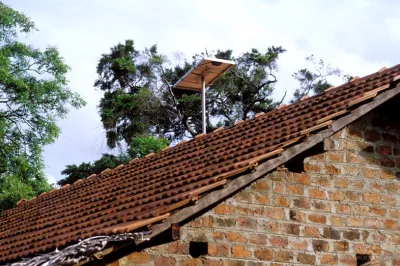Keeping the Lights On: Repayment Challenges in PAYGo Solar
Borrowers stop paying, as some always do. It’s one of the guarantees of lending: If you’re loaning money to folks who do not have enough of their own, eventually a few (or more) of them won’t have enough when it’s time to pay you back. This risk is priced in, and socially motivated lenders know that a certain level of defaults is fine; it means they’re reaching the right number of people. But understanding the reasons why borrowers stop paying is vital to minimizing defaults. And on that score, pay-as-you-go (PAYGo) solar lenders have some unique advantages, but also some unique challenges.
"I have stayed for two days now without paying because I did not have the money. ... If I get money now, I will first go and bring the wood for my carving business, not to pay for solar. When my child is sent home for money, or if they don’t have food, I will still buy the carving materials first so that tomorrow they can go to school and have food.” — PAYGo customer in Kenya

While conducting interviews with 138 households in Cote d'Ivoire, Ghana, Kenya and Tanzania as part of PAYGo solar research funded by CGAP and FIBR, our researchers sought out customers in arrears to find out why they had missed payments. In all cases, their lights had been automatically turned off; there were dark days, sometimes months, when their solar home systems (collateral) were remotely and temporarily seized. Most understood that this was the deal they had signed up for, that the darkness was in some way the price of the light. All were eager to have their lights back on. We heard the same answers for why people could not pay: service issues, poor fits with their income, liquidity, payment frictions and poorly understood terms. In this post, we look at three common challenges and try to identify ways that PAYGo providers can help customers keep their homes bright.
Liquidity
“They may not consider me a good payer because of this month's delay, but personally I think I am. I can’t let my child stay at home for lack of school fees simply because I need light.” — PAYGO customer in Kenya
One of the main causes of missed solar payments are higher-priority expenses that drain customers’ cash. Sometimes these expenses are predictable but unavoidable, such as school fees or agricultural inputs. Other times they are unforeseen. Household injuries or illnesses are major causes for payment disruption.
PAYGO lenders already offer high levels of flexibility with no arrears and little compounded interest. But given the close relationship PAYGo providers have with their customers, providers could do even more to help households with short-term liquidity during difficult periods. PAYGo top-up advances for three to five days of light, similar to airtime credit or prepaid energy top-up loans, could be offered to good payers at a minimum cost. These advances would incentivize customers to be on-time with their regular payments while cementing a long-term relationship between customers and providers.
Payment logistics
“Ever since I got the device I haven’t been able to use it. ... We actually want to pay. It’s just that the man no longer comes around for the payment.” — PAYGo customer in Cote d’Ivoire
PAYGo providers’ reliance on mobile payments allows them to collect payments from far-flung customers. But in West Africa, numerous respondents told us that they did not have mobile wallets or did not know how to use them. They had to rely on third-party agents — and sometimes provider technicians — to make transactions. Agents were often the only cash-in point for that area; if they were ill or absent, the customer could not pay.
PAYGo providers need to find ways of making payments as frictionless as possible. This may mean developing more user-friendly payment experiences, or it may mean establishing their own network of cash-in points for customers. This is may not be ideal, but it does represent an opportunity to collaborate with mobile network operators and open new areas for expansion.
Terms
“When l read through all the documents, l realized l was supposed to pay [~$32] as deposit and [$0.60] daily. But [the agent] only said [to pay a $23 deposit], which will amount to different totals. Now I am wondering if the documents were inaccurate.” — PAYGo customer in Ghana
Pay-as-you-go solar is a complicated concept to explain. It is no less complicated at the point of sale, where a sales agent must educate potential borrowers about their new hardware, their loan terms, and in many cases, the digital finance channel they will use to make payments. In such a rapid and dense encounter, things inevitably get missed or forgotten. And agents who are being paid commissions may not always be incentivized to fully explain loan terms.
We encountered numerous cases of borrowers who did not understand their loan agreements. In some cases, it was already affecting their payment behavior, particularly if they felt they had been deceived. Some providers have improved customers’ understanding by scheduling after-sales calls to ensure customers know how to use their unit and meet their loan obligations. This could and should be adopted as an industry-wide standard.
Relationships
“You can be given something, but the way you are talked to will either make you want to pay for it or not.” — PAYGo customer in Kenya
As with all loans, repayment requires that the borrower wants to pay the lender, and in this respect, relationships matter. PAYGo providers are building deep, long-term relationships with most of their clients. People like the way they are spoken to by PAYGo call staff, and they deeply appreciate the flexibility that is offered to them by select lenders. Maintaining that trust, making it easy to pay, and helping customers through hard times are all needed to maximize value in the future, both for service providers and the people they serve.




Add new comment